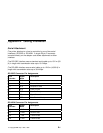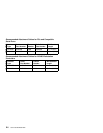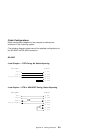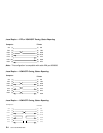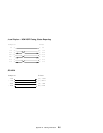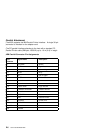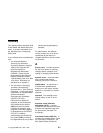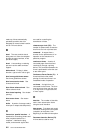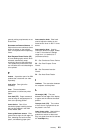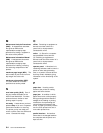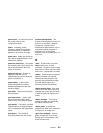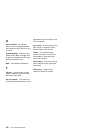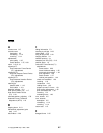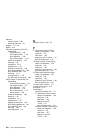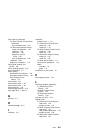made up of three automatically
operated input bins and a bin
designed for manual sheet insertion,
and an F4 forms device.
B
baud. The rate at which data is
being sent to or from the computer
through the serial interface, in bits
per second (bps).
bezel. A surrounding or retaining
part such as the cable connector
support.
bidirectional. Printing in either
direction, right to left or left to right.
blue forms guide/forms sensor.
See
forms guide/forms sensor
.
blue forms tension knob. See
forms tension knob
.
blue ribbon advance knob. See
ribbon advance knob
.
blue slotted opening. See
slotted
opening
.
blue tractor doors. See
tractor
doors
.
buffer. A portion of storage used to
hold input or output data temporarily.
C
Centronics* parallel interface. A
standard for connecting printers and
other peripheral devices to a
computer. It defines the plug,
socket, and electrical signals that
are used for controlling the
transmission of data.
characters per inch (CPI). The
number of alphanumeric characters
that fit into one inch of printed text.
command. A request from a
terminal for the performance of an
operation or the execution of a
particular program.
continuous forms. A series of
connected paper forms that feed
continuously through a printing
device. The connection between the
forms is perforated to allow the user
to tear them apart.
Continuous Forms Device (F1). A
forms feed device that allows
printing of continuous forms in an
unattended mode of operation.
cut forms. A single form, not
connected to other forms. The form
may have more than one part; that
is, it may have an original and one
or more copies.
D
data bits. The number of data bits
sent in each transmission frame
using the serial interface.
data stream. Print data and control
information flowing from host system
(computer) to the printer, from
beginning to end without interruption.
Document Insertion Device (F3).
A forms device used for most
X-2 User’s Guide Model 302




